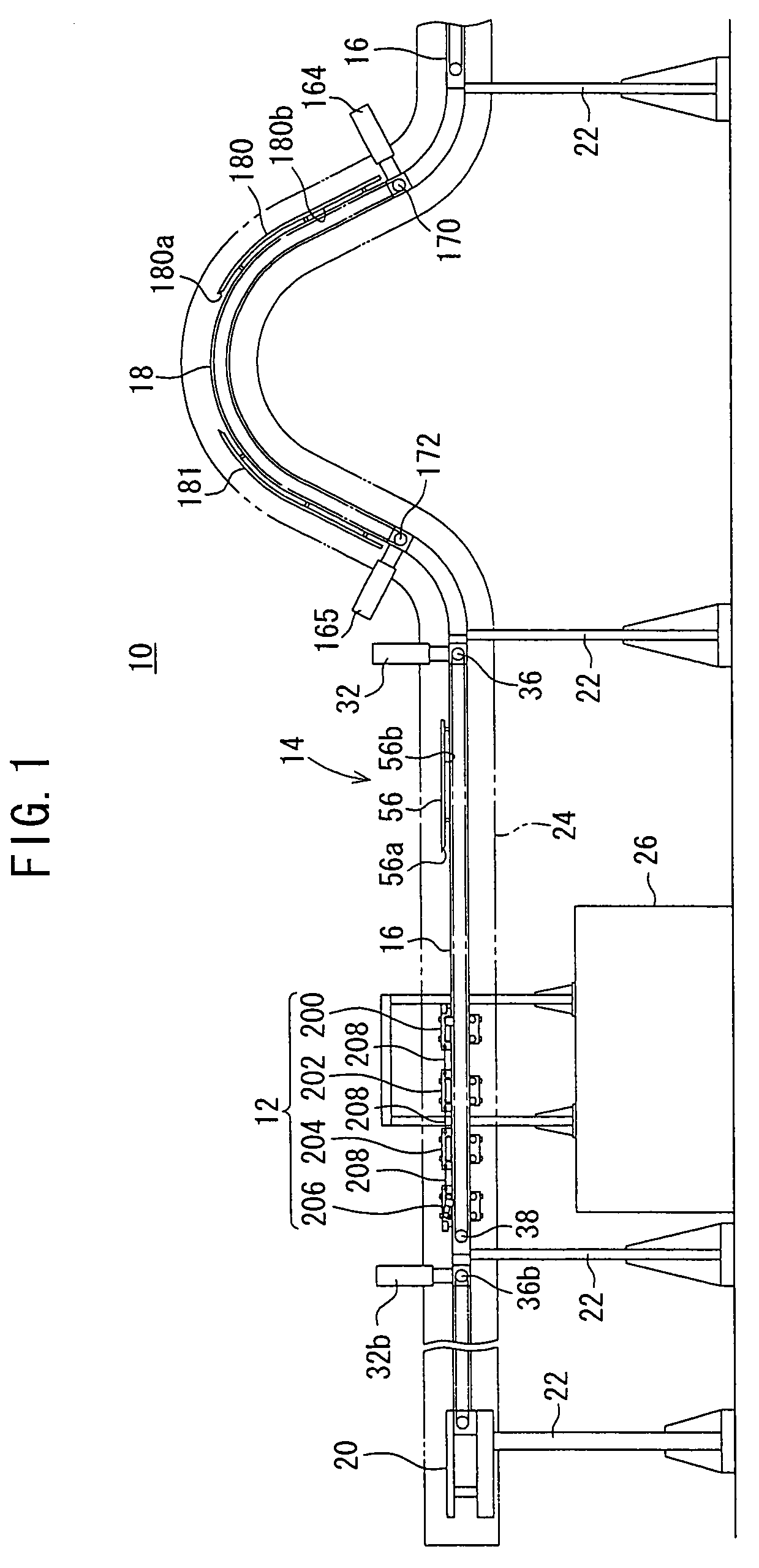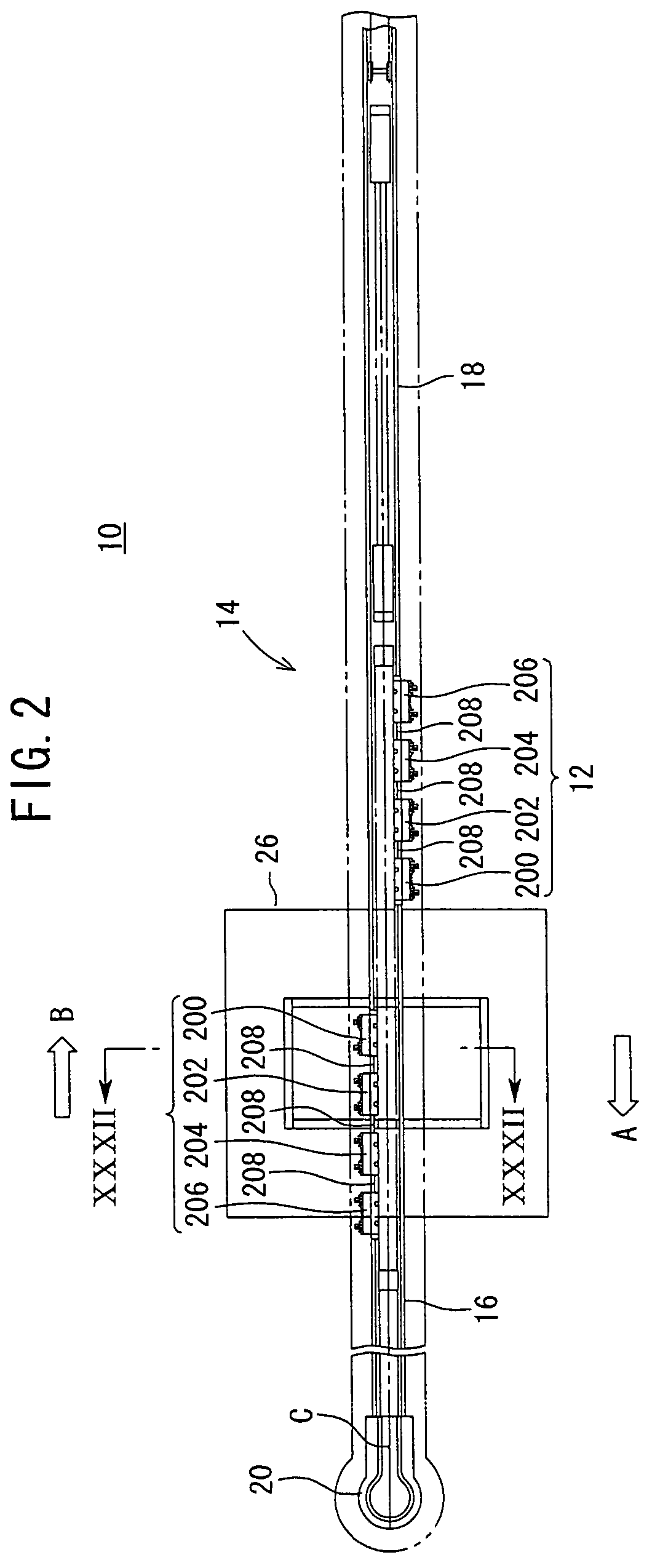Conveyance system
a technology of conveying system and conveying path, which is applied in the direction of rope railway, charge manipulation, furnaces, etc., can solve the problems of complex structure of conveying path, inability to flexibly change the distance over which workpieces are conveyed by the conventional conveyancing system, and relaying device limit the speed at which workpieces are conveyed
- Summary
- Abstract
- Description
- Claims
- Application Information
AI Technical Summary
Benefits of technology
Problems solved by technology
Method used
Image
Examples
Embodiment Construction
[0115]A conveyance system according to a selected illustrative embodiment of the present invention will be described below with reference to FIGS. 1 through 37.
[0116]As shown in FIG. 1, a conveyance system 10 according to the present invention has a joint conveyance carriage assembly 12 capable of conveying a workpiece and a conveyance assembly 14 for conveying the joint conveyance carriage assembly 12, the conveyance assembly 14 providing a conveyance path for transferring workpieces between areas of a industrial plant.
[0117]First, the conveyance assembly 14 will be described below.
[0118]As shown in FIG. 2, the conveyance assembly 14 has a function to convey the joint conveyance carriage assembly 12 to the right (in the direction indicated by the arrow B) in an upper region in FIG. 2, and to deliver the joint conveyance carriage assembly 12 to the left (in the direction indicated by the arrow A) in a lower region in FIG. 2. The conveyance assembly 14 also has a function to change t...
PUM
 Login to View More
Login to View More Abstract
Description
Claims
Application Information
 Login to View More
Login to View More - R&D
- Intellectual Property
- Life Sciences
- Materials
- Tech Scout
- Unparalleled Data Quality
- Higher Quality Content
- 60% Fewer Hallucinations
Browse by: Latest US Patents, China's latest patents, Technical Efficacy Thesaurus, Application Domain, Technology Topic, Popular Technical Reports.
© 2025 PatSnap. All rights reserved.Legal|Privacy policy|Modern Slavery Act Transparency Statement|Sitemap|About US| Contact US: help@patsnap.com



